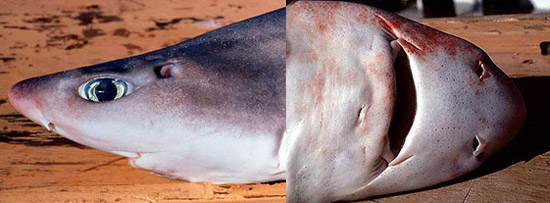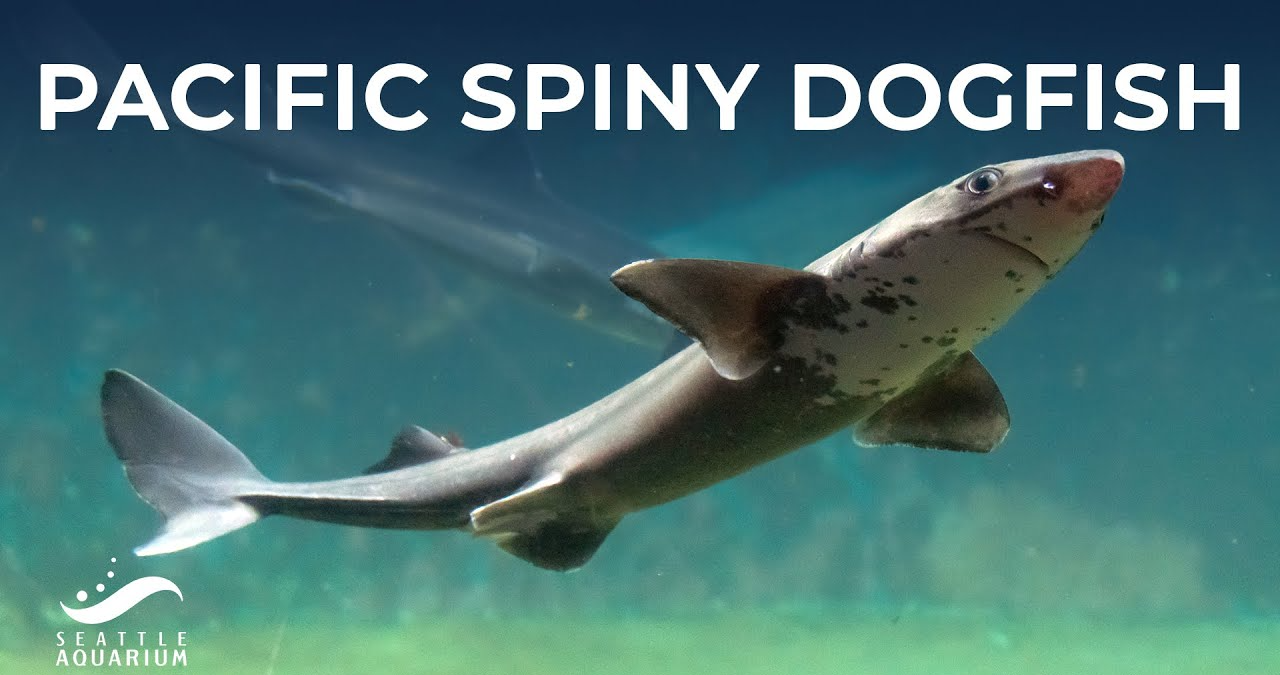Dive into the mysterious world of the roughskin dogfish deep sea shark—a resilient, slow-moving predator thriving in the cold, dark depths of our oceans. Learn about its traits, diet, and conservation.
The deep sea is home to some of the most fascinating and bizarre creatures on Earth. Among these hidden marvels is the roughskin dogfish, a lesser-known but intriguing deep-sea shark species. Its name alone stirs curiosity, and once you dive into its world, you’ll find it full of unique adaptations and mysterious behaviors.
Roughskin dogfish are not your typical sharks. They thrive in the dark, high-pressure world of the deep ocean, far from the sunlit waters most marine animals call home. As an expert who’s spent years researching deep-sea biology, I can say the roughskin dogfish is a treasure trove of information waiting to be explored. This article will guide you through the depths of its existence—from its physical traits to its role in the marine ecosystem.
What Is the Roughskin Dogfish?
The roughskin dogfish is a type of deep-sea shark that belongs to the family Somniosidae, often referred to as sleeper sharks. This shark is notable for its tough, sandpaper-like skin and its ability to thrive in some of the deepest parts of the ocean.
Unlike the sleek and fast predators we often associate with sharks, the roughskin dogfish is slow-moving and relies on stealth and patience to survive. Its rough skin serves not just as protection, but also as camouflage against the dark seafloor. It’s a species built for endurance rather than speed, adapted perfectly to its mysterious underwater realm.
One of the most distinguishing features of the roughskin dogfish is its elongated, slender body and large eyes that help it navigate the dimly lit waters of the deep sea. This species is typically grayish-brown and can grow up to several feet long, depending on the environment and availability of food.
Habitat: Deep Sea Life of the Roughskin Dogfish
The roughskin dogfish makes its home in deep, cold oceanic waters, often found at depths ranging from several hundred to a few thousand meters. These sharks are especially prevalent in the North Pacific, though they have also been observed in other global deep-sea zones.
Living in the deep sea means the roughskin dogfish must cope with high pressure, low temperatures, and complete darkness. But this harsh environment also offers a degree of protection from predators and human interference. The deep sea acts like a shield, keeping this elusive creature safe from many of the threats faced by its shallow-water counterparts.
Interestingly, their habitat is also incredibly stable, with little seasonal change. This stability plays a crucial role in the shark’s slow metabolism and long lifespan, which we’ll discuss later. In this environment, the roughskin dogfish can thrive without the need to migrate great distances, conserving its limited energy resources.
Physical Characteristics and Unique Traits
The roughskin dogfish has a body designed for survival in the deep sea. Its skin is one of its most notable features—covered with dermal denticles, giving it a rough, sandpaper-like texture that acts as a protective armor against parasites and predators.
Their large eyes are adapted for the low-light conditions of the deep sea. These eyes help them spot prey and navigate their environment, even with the minimal light available. Another interesting trait is their bioluminescent capabilities, which they use to confuse predators or attract prey.
Another fascinating aspect is their liver, which is incredibly large and filled with oil. This helps with buoyancy in the dense, cold waters they inhabit. Instead of relying on swim bladders like many fish, roughskin dogfish use their oil-rich liver to maintain buoyancy—a perfect adaptation for a deep-sea life.
Diet and Hunting Strategy
Roughskin dogfish are not aggressive hunters. Their strategy is more about patience and stealth. They feed on a variety of prey, including squid, smaller fish, and crustaceans. Thanks to their slow metabolism, they can go for long periods without food.
Their hunting often involves ambushing unsuspecting prey or scavenging carcasses that sink from the upper layers of the ocean. In many ways, they serve as the clean-up crew of the deep sea, playing a vital ecological role by consuming dead and decaying matter.
Because food can be scarce at such depths, these sharks have evolved to make the most out of every meal. Their strong jaws and sharp teeth allow them to tackle tough prey, including species with hard exoskeletons or dense muscle tissue.
Reproduction and Lifecycle
Little is known about the exact reproductive habits of the roughskin dogfish, mainly due to the difficulty of observing them in their natural habitat. However, like many other deep-sea sharks, they are believed to have a slow reproductive rate.
They are ovoviviparous, meaning the eggs hatch inside the female’s body, and she gives birth to live young. This strategy offers the offspring some protection during their early stages of development. However, it also means the population recovers slowly if numbers decline.
This slow growth and reproduction rate is a hallmark of many deep-sea species and is part of what makes them so vulnerable to overfishing and habitat disruption. The roughskin dogfish, in particular, may live for decades, maturing only after many years.
Ecological Role of the Roughskin Dogfish
The roughskin dogfish plays an important role in maintaining the health of the deep-sea ecosystem. As a scavenger, it helps break down and recycle organic material, ensuring that nutrients are returned to the ocean floor.
By feeding on a variety of species, the roughskin dogfish helps maintain balance within the food web. Its presence indicates a healthy, functioning ecosystem. Without such predators and scavengers, the deep sea could become clogged with decaying matter, affecting countless other species.
Its ability to adapt and survive in such extreme conditions also makes it a valuable subject for scientific research. By studying the roughskin dogfish, researchers gain insights into how life can endure in one of the harshest environments on Earth.
Human Interaction and Threats

While the roughskin dogfish isn’t typically targeted by fisheries, it can be caught as bycatch in deep-sea trawling operations. This poses a significant threat, especially considering its slow reproductive rate. Any disruption in its population could take decades to reverse.
Climate change also presents a growing threat. As ocean temperatures rise and oxygen levels drop, even deep-sea creatures like the roughskin dogfish may feel the effects. Pollution, especially plastic waste and chemical runoff, can also reach deep waters, further endangering this species.
Some regions have started implementing deep-sea fishing regulations, but more global attention is needed. Protecting this unique shark means safeguarding not only its future but also the fragile ecosystems it supports.
Cultural and Scientific Significance
While the roughskin dogfish might not be as famous as the great white or hammerhead shark, it holds a special place in marine science. Its unique physiology provides clues about evolution, adaptation, and the mysteries of deep-sea life.
In some cultures, deep-sea creatures like the roughskin dogfish are part of local folklore, often symbolizing endurance or mystery. Scientists are increasingly turning to species like this one to learn about how marine animals can survive under extreme pressure and in near-total darkness.
Research on roughskin dogfish has also contributed to advancements in marine biology, medicine, and even materials science. Their tough skin and bioluminescent abilities could inspire innovations in technology and engineering.
Conservation Efforts and Future Outlook
Conservation of deep-sea species like the roughskin dogfish is a challenging but vital task. Roughskin Dogfish Deep Sea Marine protected areas, sustainable fishing practices, and increased scientific funding are essential steps in ensuring their survival.
Public awareness is equally important. Most people don’t even know this shark exists, let alone its ecological importance. Education and outreach can help change that, encouraging support for policies that protect deep-sea habitats.
The future of the roughskin dogfish depends largely on our actions today. With the right protections and continued research, this remarkable deep-sea predator can continue to thrive in the ocean depths.
Table: Quick Facts about the Roughskin Dogfish
| Feature | Description |
|---|---|
| Common Name | Roughskin Dogfish |
| Scientific Family | Somniosidae |
| Habitat | Deep sea, cold oceanic waters |
| Skin Texture | Sandpaper-like, due to dermal denticles |
| Diet | Squid, small fish, crustaceans, carrion |
| Reproduction | Ovoviviparous |
| Conservation Status | Not well-defined, potentially at risk |
| Unique Adaptation | Oil-rich liver for buoyancy |
Quotes About the Roughskin Dogfish
“The roughskin dogfish reminds us that even the darkest parts of the ocean are full of life and wonder.” — Marine Biologist, Dr. L. Hammond
“It may not be beautiful by traditional standards, but the roughskin dogfish is a masterpiece of evolutionary design.” — Deep-Sea Explorer, K. Martinez
FAQs About the Roughskin Dogfish Deep Sea
Q: What makes the roughskin dogfish different from other sharks? A: Its rough skin, slow movement, and deep-sea habitat make it quite unique. It also has a large, oily liver for buoyancy and can live in extremely high-pressure environments.
Q: Is the roughskin dogfish dangerous to humans? A: Not at all. It lives in deep-sea zones far from human activity and is not aggressive. Encounters with humans are extremely rare.
Q: How big can the roughskin dogfish get? A: They can grow to several feet long, though exact sizes vary depending on environmental factors.
Q: Where can you find the roughskin dogfish? A: They’re mostly found in the North Pacific but have also been spotted in other deep-sea regions around the world.
Q: Why is conservation important for this species? A: Due to their slow reproduction and deep-sea habitat, they are vulnerable to fishing and environmental changes. Protecting them helps maintain deep-sea biodiversity.
Q: Can roughskin dogfish be kept in aquariums? A: No, they require very specific conditions only found in the deep sea, such as high pressure and low temperatures.
Conclusion
The roughskin dogfish deep sea creature is an enigmatic and essential part of our ocean’s biodiversity. Though it lives far below the surface, its role in the marine ecosystem is significant. As we learn more about the deep sea and the creatures that call it home, it’s clear that species like the roughskin dogfish deserve our attention and protection. Their story is one of resilience, adaptation, and the enduring mysteries of the ocean.



